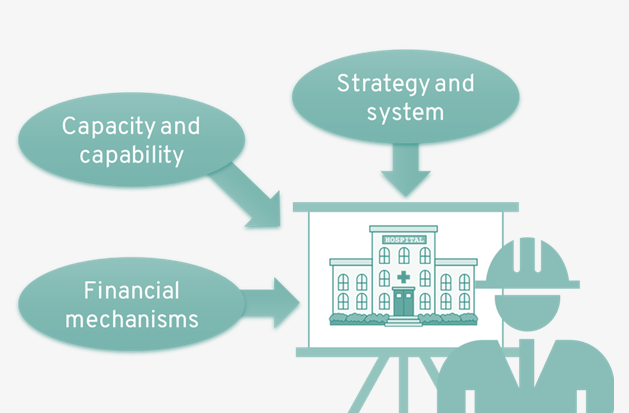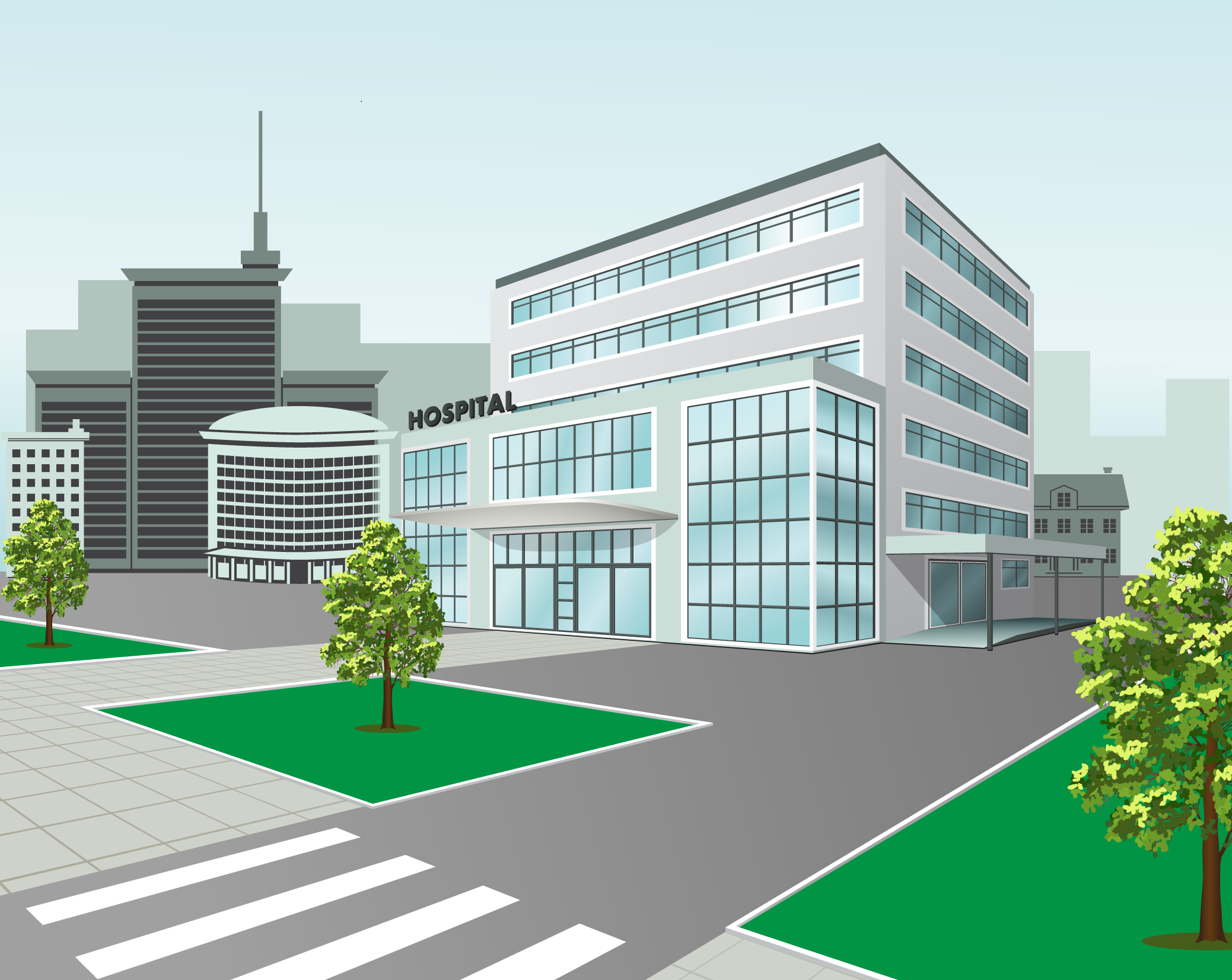Finally, a recognition to improve hospital infrastructure
The government published its Health Infrastructure Plan (HIP) in September 2019. It is billed as a rolling 5-year programme of investment in health infrastructure. A major component of this will be a programme to build new hospitals which are fit for the future and support the NHS long-term plan. 27 hospital building projects have initially been identified, with 6 of these receiving immediate funding to be delivered by 2025. The remaining 21 have will progress their planning with a view to deliver by 2030.
The injection of capital spending is well overdue and welcomed, however there are many challenges in addition to the actual construction that need to be addressed, to deliver these new hospitals. There are three notable areas that should be tackled alongside the development of these building programmes; organisations need to consider the wider strategy and system, their internal capacity and capability, and the financial mechanisms entailed.

An opportunity that goes beyond new buildings
As the HIP itself suggests ‘infrastructure is more than just bricks and mortar’. The design of all new facilities across the NHS must be relevant to current and future health care delivery needs. Therefore, a clinical strategy for the whole local health and care system that aims at implementing the long-term plan is paramount in supporting the hospital builds. To ensure the investment is good value, it needs to demonstrate how it can dial in all elements of performance, quality, access and financial, i.e. it is a whole system solution.
Ongoing operating constraints set against increasing demand, mean that in most cases, NHS organisations are focussed on delivering this year, and at best planning for the next. With capacity and capability already stretched, there is little or no resource to think, or to execute large infrastructure builds in line with the long-term plan.
Financially, hospital build projects are difficult to execute; the approvals process is overly bureaucratic and can be difficult to navigate, the overall framework isn’t conducive to long term projects, in particular because of the lack of budget certainty over multiple years, and over time the capital regime has gradually become disconnected from the systems for revenue and cash.
Starting with a process of self-reflection
To make the HIP capital investment worthwhile and sustainable for the wider health systems involved, there are key questions that should be asked from the onset:
- Do you have a clinically supported and implementable strategy as a Hospital/Trust/System?
- How can you create the capacity and capability to produce a quality business case that will guarantee access to the capital allocations earmarked under the HIP?
- What are the improvements on the key performance indicators?
- Do you have the capacity and capability to navigate the complex system and relationships in order to deliver the business case required?
Lack of a co-produced clinical strategy will drive an estates-based solution. This will be a short term response to access the additional capital investment, resulting in sub optimal solutions. Also, due to “re-organisation” into ICS, ICP and PCNs, it may be challenging to develop consensus on the way forward, resulting in a provider solution that may not be fit for purpose in the medium to longer term.
“Use it as the transformation engine, rather than capital spend.”
A recipe for more effective planning and execution
This is a great opportunity to deliver improved outcomes for the population by driving through the right system change, with estates acting as a catalyst. To create lasting value from the HIP opportunity, organisations need to take a systematic view. They should consider some obvious and not so obvious factors:
1.Creating a change narrative centred on the individual/patient, and how the changes would meet their needs is be critical from the start of the process. This will get all stakeholders engaged and aligned, including the public and commissioners.
2. Looking for the perfect solution and trying to fix all the issues of the past can be counterproductive. Focusing on the right outcomes and making rational compromises can sometimes be more effective.
3. Learn from the past and get the business case right from the start. Don’t get stuck down the line trying to retrofit it to the design.
4. Ensure the development is central to and integrated into the wider system transformation and annual planning. Use it as the transformation engine, rather than capital spend.
5. Execute at pace and manage the process well. Use an interactive and agile approach, encourage ideation, and do not restrict your thought processes for fear of failure.
6. Throughout the development, be proactive and forward thinking, always looking beyond the next milestone or checkpoint on the plan. Having experienced individuals onboard who can help navigate the process is critical.
7. Simplify the transformation agenda as much as possible and use independent external reviews to reduce risk and support decision-making from the start.
8. Use a multi-disciplinary team with a range of expertise such as clinical, commercial, estates and commissioning. This will provide the necessary depth and breadth of knowledge required to deliver a transformation with value to the whole system.
9. Maintain momentum and follow through on implementing the service/clinical strategy. More than often, this can fizzle out as soon as the build is complete, as it is deemed too difficult to achieve and the true value of the change is not realised.
Making it count
This is a fantastic opportunity to improve the quality of care and health outcomes. The real beneficiaries will be the population served by the organisations who are recipients of the HIP funding. However, the planning and delivery needs to be done considerately, and with a different more encompassing approach to the way things have been done in the past. Unfortunately, there are a number of examples of similar initiatives where state of the art buildings have failed to enable better care.
Get in touch if you would like to learn more or if you would like to advantage of a free workshop to get your estates transformation off to a winning start.




